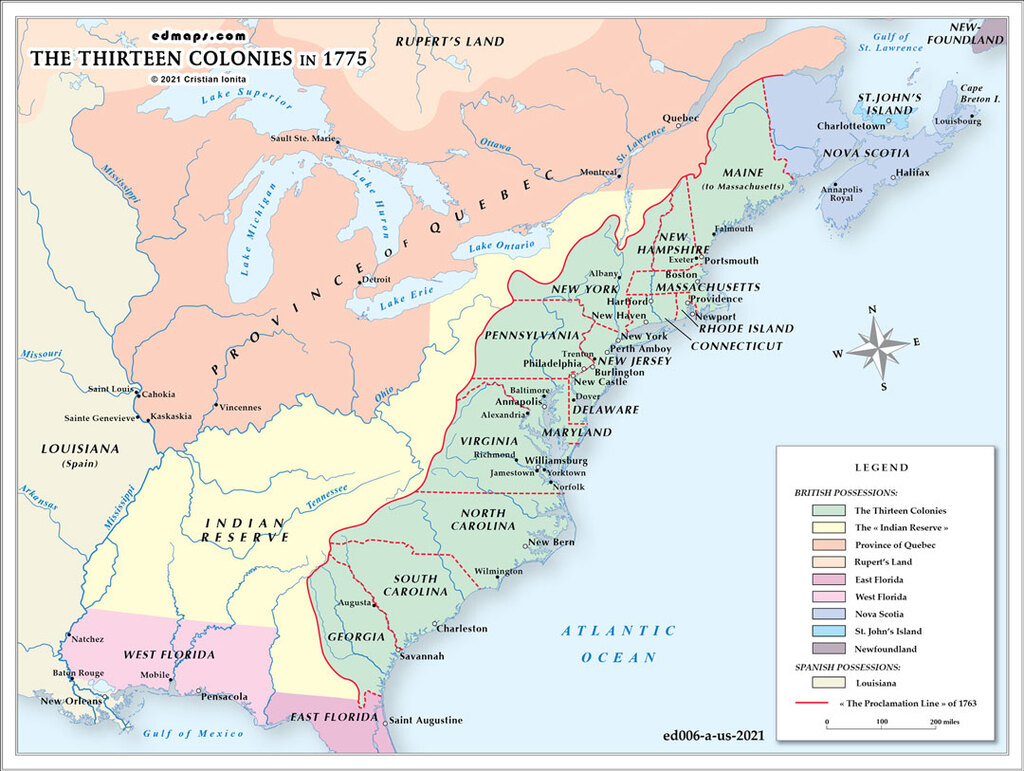

By 1775, the thirteen American colonies had evolved into a complex territorial and administrative system on the brink of revolutionary upheaval, with growing tensions over British imperial control and western expansion.
The thirteen colonies maintained their established governmental frameworks: eight royal colonies (New Hampshire, New York, New Jersey, Virginia, North Carolina, South Carolina, Georgia, and Massachusetts after 1691), three proprietary colonies (Pennsylvania, Delaware, Maryland), and two charter colonies (Rhode Island and Connecticut). Each possessed colonial assemblies, appointed or elected governors, and distinct legal systems, though all remained subject to British parliamentary authority and imperial oversight.
The Royal Proclamation of 1763's prohibition on settlement west of the Appalachian Mountains had created mounting frustration among colonists. Land speculators, settlers, and colonies with sea-to-sea charter claims (Virginia, Massachusetts, Connecticut, North Carolina, South Carolina, Georgia) increasingly viewed the proclamation as an illegal restriction on their territorial rights and economic opportunities.
The Quebec Act of 1774 extended Quebec's boundaries south to the Ohio River and west to the Mississippi, effectively transferring much of the Ohio Valley from potential colonial control to Quebec's jurisdiction. This act intensified colonial anger, as it appeared to reward Catholic Quebec while restricting Protestant colonial expansion.
By 1775, colonial resistance had created parallel governmental structures. The Continental Congress, first convened in 1774, was asserting coordinating authority among the colonies. Provincial congresses and committees of safety were replacing or challenging royal authority in individual colonies.
Despite British restrictions, colonial settlement continued pushing westward. Daniel Boone was establishing Kentucky settlements, and land companies were organizing western ventures. Virginia, claiming vast western territories through its colonial charter, was particularly active in asserting territorial rights beyond the proclamation line, setting the stage for post-independence territorial expansion and disputes.

Lorem ipsum dolor sit amet, consectetuer adipiscing elit. Aenean commodo ligula eget dolor. Lorem ipsum dolor sit amet.

Lorem ipsum dolor sit amet, consectetuer adipiscing elit. Aenean commodo ligula eget dolor. Lorem ipsum dolor sit amet.

Lorem ipsum dolor sit amet, consectetuer adipiscing elit. Aenean commodo ligula eget dolor. Lorem ipsum dolor sit amet.